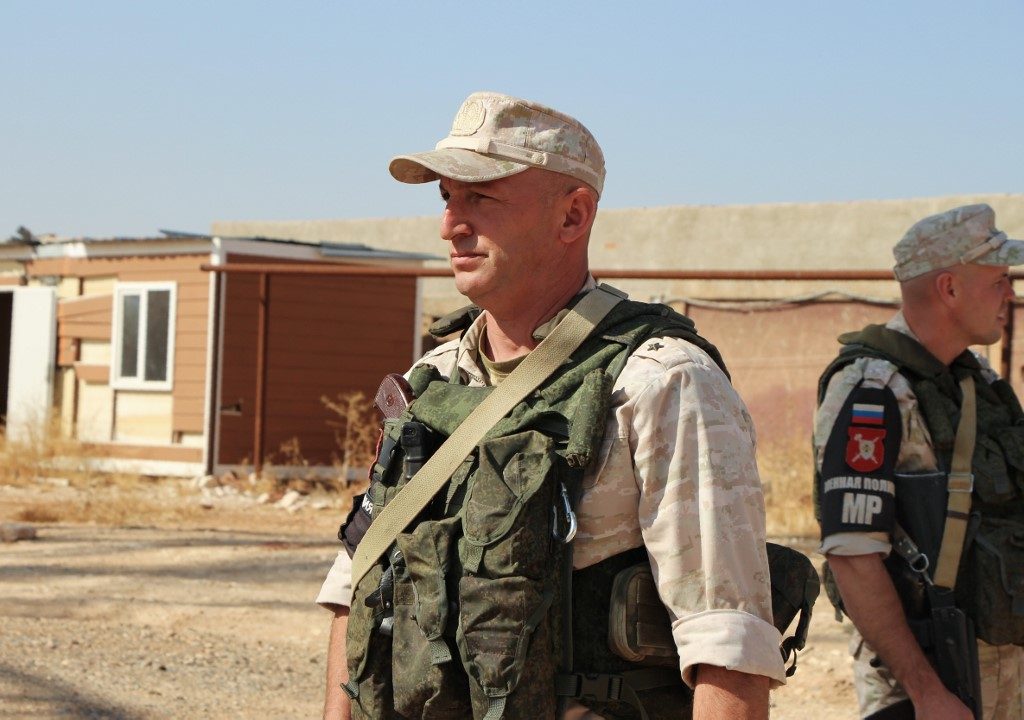SUMMARY
This is AI generated summarization, which may have errors. For context, always refer to the full article.

QAMISHLI, Syria (UPDATED) – Damascus and Moscow deployed extra forces Friday, October 25, to Syria’s border with Turkey, even as Washington partially reversed a drawback to boost its own military presence near key Syrian oil fields.
The United States earlier this month announced a pullout from Kurdish-held areas in northeast Syria, allowing Damascus, Ankara and Moscow to carve up the Kurds’ now-defunct autonomous region.
Turkey and its Syrian proxies on October 9 launched a cross-border attack against Kurdish-held areas, grabbing a 120-kilometer-long (70-mile) swathe of Syrian land along the frontier.
The deadly incursion killed hundreds and caused 300,000 people to flee their homes in the latest humanitarian disaster in Syria’s brutal eight-year war.
This week, Turkey and Russia struck a deal in Sochi for more Kurdish forces to withdraw from the frontier on both sides of that Turkish-held area under the supervision of Russian and Syrian forces.
Before dawn Friday, an Agence France-Presse (AFP) stringer saw a convoy of hundreds of regime troops arriving in the border town of Kobane.
Dozens of soldiers sat atop a truck touting guns and waving Syria’s two-star flag as they made their way into town to a cacophony of honking horns, he said.
“One, one, one, the Syrian people are one,” they shouted.
The Syrian Observatory for Human Rights, a Britain-based monitor relying on sources inside Syria, said 180 vehicles had arrived in Kobane.
Moscow, for its part, said 300 Russian military police had arrived in Syria to help ensure Kurdish forces withdraw to a line 30 kilometers (18 miles) from the border in line with the agreement on Tuesday, October 22.
Russian patrols
Near the town of Qamishli, and AFP correspondent saw armored cars flying Russian flags head westwards from a regime-held base on a third day of patrols.
Under the Sochi deal, Kurdish forces have until late Tuesday to withdraw from border areas at either end of the Turkish-held area, before joint Turkish-Russian start patrols in a 10-kilometer (six-mile) strip there.
Ankara eventually wants to set up a so-called “safe zone” on Syrian soil along the entire length of its 440-kilometer border, including to resettle some of the 3.6 million Syrian refugees currently in Turkey.
The Kurdish-led Syrian Democratic Forces (SDF) has made clear it objected to some provisions of the Sochi agreement and it has so far maintained several border positions.
Human rights groups on Friday accused Turkey of already “forcibly” having deported refugees to war-torn Syria in the months leading to its attack.
Fighting between the two sides raged southeast of the Turkey-held zone on Friday despite the truce, the Observatory said.
Near the town of Ain Issa, 5 members of a family were wounded when a Turkish drone stuck their car, the war monitor said.
Syria’s Kurds have largely stayed out of their country’s civil war, instead building their own institutions and working towards autonomy.
But SDF forces have been a key US ally in the fight against the Islamic State group, although Turkey views them as “terrorists.”
SDF commander-in-chief Mazloum Abdi has expressed reservations about the Turkish-Russian deal, and says he refuses to leave his people “alone without protection.”
On Wednesday, October 23, he said he would be open to a German proposal for international forces to patrol the border area.
The plan was raised at a NATO meeting of defense ministers in Brussels on Thursday.
US to protect oil
Abdi is expected to visit Washington soon, even as Turkish President Recep Tayyip Erdogan on Thursday urged the US to hand over the SDF commander, insisting he was a wanted “terrorist.”
After years of fighting ISIS, the SDF control hydrocarbon-rich areas, including Syria’s largest oil field in Al-Omar in the east.
But the withdrawal of their US backer left them outgunned in the face of attacking Turkish forces, forcing them to seek the return of regime troops.
Late Thursday, however, the United States said it would beef up its presence in the northeast near key oil fields.
“The US is committed to reinforcing our position, in coordination with our SDF partners, in northeast Syria,” a Pentagon official said.
Washington would do so “with additional military assets to prevent those oil fields from falling back to into the hands of ISIS or other destabilizing actors,” he said, referring to ISIS but without providing numbers.
President Bashar al-Assad’s cash-strapped regime is in desperate need of the northeast’s natural resources.
The SDF expelled ISIS from their last patch of territory in Syria last March, but sleeper cells still claim deadly attacks.
The Kurds hold tens of thousands of ISIS suspects and their family members in jails and camps, and they have repeatedly warned the Turkish invasion increases the risk of a mass breakout. – Rappler.com
Add a comment
How does this make you feel?
There are no comments yet. Add your comment to start the conversation.